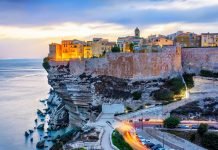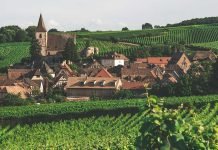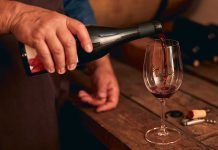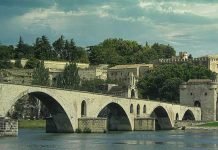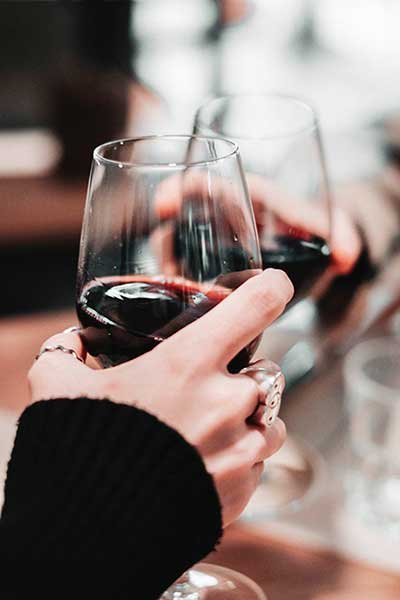- Bordeaux is one of France’s largest wine producing regions, known for its exceptional wines.
- The region is divided into two main areas: the Left Bank and the Right Bank, each offering unique wine styles.
- The Left Bank is known for its Cabernet Sauvignon-dominant blends, producing bold and structured red wines.
- The Right Bank focuses on Merlot-dominant blends, resulting in softer and more approachable red wines.
- Bordeaux also produces white wines, with Sauvignon Blanc and Semillon being the primary grape varieties used.
The Bordeaux wine region, nestled in the southwest of France, is a mecca for wine enthusiasts from around the world. Its rich history, combined with a perfect blend of climate and soil, has given birth to some of the most celebrated wines ever produced. When visiting Bordeaux, it’s essential to have an understanding of the wines you’ll encounter.
Geographical Divisions:
The Left Bank:
- Location: Stretching along the western side of the Gironde estuary, the Left Bank includes the Médoc and Graves regions.
- Characteristic Wines: The wines from this area are primarily dominated by Cabernet Sauvignon, which thrives in the gravelly soils found here. The resulting wines are typically robust, tannic, and possess deep flavors of blackcurrant and plum, often accompanied by notes of graphite, cedar, and tobacco.
- Key Appellations: Pauillac, Saint-Julien, Margaux, and Saint-Estèphe are some of the famous appellations. Renowned châteaux, such as Château Margaux and Château Latour, are located in this area.
The Right Bank:
- Location: Located to the north of the Dordogne River and east of the Isle River, notable areas include Saint-Émilion and Pomerol.
- Characteristic Wines: Merlot dominates this region, resulting in wines that are rounder and fruitier than their Left Bank counterparts. Expect flavors of cherry, blackberry, and plum, complemented by soft tannins and velvety textures. The clay soils here suit the Merlot grape perfectly.
- Key Appellations: Saint-Émilion and Pomerol are standout regions on the Right Bank. Esteemed estates like Château Petrus and Château Cheval Blanc originate from here.
White Wines of Bordeaux: While Bordeaux is globally recognized for its reds, the region also offers outstanding white wines. These are primarily crafted from Sauvignon Blanc, which lends zesty and aromatic qualities, and Semillon, contributing roundness and a waxy texture. When blended, these grapes produce wines with vibrant acidity, showcasing flavors of citrus, apple, and often a hint of the region’s characteristic minerality.
- Key Appellations for White Wines: Pessac-Léognan and Graves are renowned for their dry white wines. For sweet wines, areas like Sauternes and Barsac stand out, producing luscious, honeyed wines that are world-famous.
Tips for Tourists:
- Winery Visits: Always make an appointment before visiting a winery. Many estates are private and require advance notice.
- Tasting Tips: Don’t feel pressured to drink every wine you’re served. Use the spittoons provided to taste without overindulging.
- Local Pairings: Enhance your wine tasting experience by pairing with local Bordeaux delicacies like entrecôte bordelaise (steak) or canelés (small pastries).
Suggested 6-day Wine Tasting Itinerary in the Bordeaux Wine Region
Day 1:
- Start your tour by visiting the city of Bordeaux itself. Explore the historic center and visit the Cité du Vin, a wine museum that offers interactive exhibits and wine tastings.
- In the afternoon, head to the Left Bank and visit the famous wine appellations of Médoc, including Pauillac, Saint-Julien, and Margaux. Take a tour of the prestigious châteaux and taste their renowned Cabernet Sauvignon wines.
- End the day with a visit to a local restaurant in Bordeaux to enjoy a delicious dinner paired with Bordeaux wines.
Day 2:
- Explore the Right Bank and visit the charming village of Saint-Émilion. Take a guided tour of the underground cellars and taste the Merlot-dominant wines produced in this region.
- In the afternoon, visit the nearby appellation of Pomerol, known for its exceptional Merlot wines. Take a stroll through the vineyards and enjoy the scenic views.
- Return to Bordeaux and indulge in a wine tasting experience at one of the city’s wine bars or wine shops.
Day 3:
- Take a day trip to the beautiful vineyards of the Graves and Sauternes appellations. Explore the vineyards and learn about the production of the region’s white wines, including the famous sweet wines of Sauternes.
- Enjoy a picnic lunch amidst the vineyards, paired with a selection of Bordeaux white wines.
- In the evening, attend a wine tasting event or a wine pairing dinner organized by local wineries or wine associations.
Day 4:
- Visit the picturesque village of Saint-Émilion again and take a hot air balloon ride over the vineyards. Experience breathtaking views of the vine.
- Visit the picturesque village of Saint-Émilion again and take a hot air balloon ride over the vineyards. Experience breathtaking views of the vineyards and the entire Bordeaux wine region from above.
- After the balloon ride, visit some of the smaller, family-owned wineries in the Saint-Émilion area. These wineries offer a more intimate and personal wine tasting experience, allowing you to discover hidden gems and unique expressions of the region’s wines.
- Enjoy a leisurely lunch at a local restaurant in Saint-Émilion, pairing your meal with the region’s red wines.
- In the afternoon, explore the nearby Entre-Deux-Mers region, known for its white and red wines. Visit some of the charming vineyards and taste the diverse range of wines produced here.
Day 5:
- Head north to the Médoc region and visit the prestigious appellations of Saint-Estèphe, Pauillac, Saint-Julien, and Margaux. Take guided tours of the grand châteaux and learn about the winemaking process.
- Enjoy tastings of the Cabernet Sauvignon-dominant wines that have made these appellations famous.
- In the evening, return to Bordeaux and take a wine cruise along the Garonne River. Enjoy panoramic views of the city while sipping on Bordeaux wines and learning about their history and production.
Day 6:
- On your last day, visit the Graves region, known for its red and white wines. Explore the vineyards and taste the elegant and well-structured red blends, as well as the crisp and aromatic white wines.
- Take a tour of the prestigious châteaux in the region and learn about the unique terroir that contributes to the distinct character of these wines.
- End your tour with a farewell dinner at a Michelin-starred restaurant in Bordeaux, where you can indulge in a gourmet meal paired with exceptional Bordeaux wines.
Remember to check the opening hours and make reservations in advance for winery visits and tastings. This itinerary provides a general overview of the Bordeaux wine region, but feel free to customize it based on your preferences and the time you have available. Enjoy your wine tour of Bordeaux!

